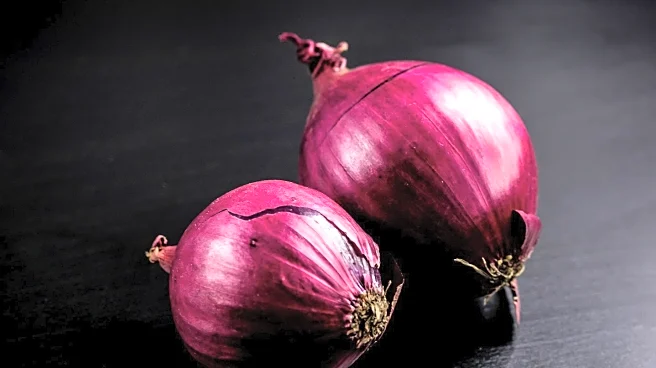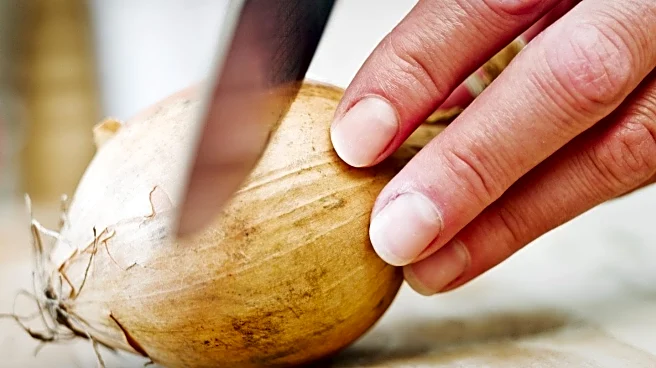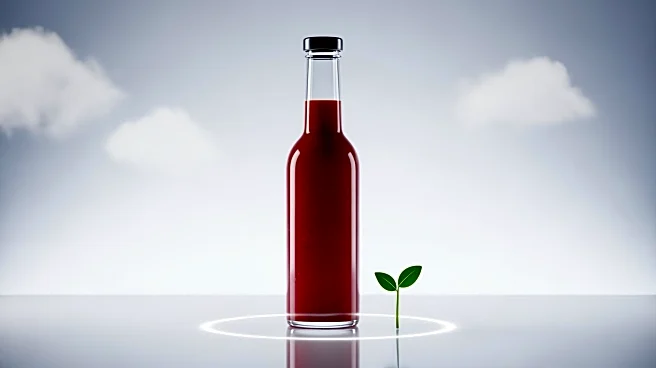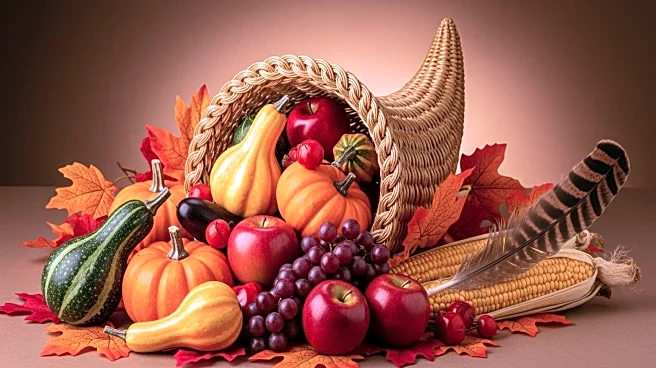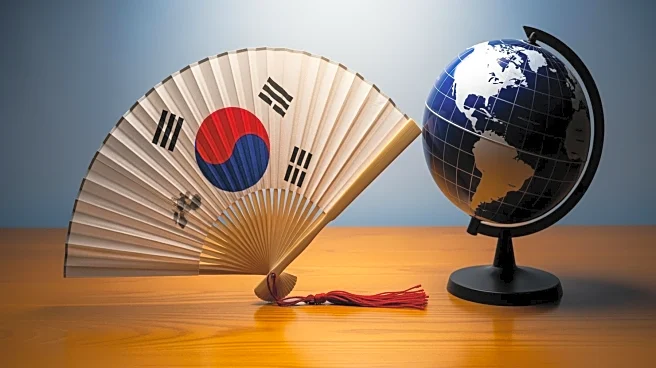What's Happening?
Researchers from Cornell University have discovered a method to significantly reduce the tears caused by chopping onions. The study, led by biomechanist Zixuan Wu, involved using sharper blades and slower cutting techniques to minimize the release of
onion mist, which contains propanethial S-oxide, the chemical responsible for eye irritation. The team employed a mini guillotine, high-resolution cameras, and sensors to analyze the droplets expelled during onion cutting. Their findings revealed that sharper knives and gentle cuts keep the droplet mist below eye level, reducing eye irritation. The study also debunked the common belief that chilling onions reduces mist production, finding that temperature had little effect on mist release.
Why It's Important?
This discovery has significant implications for both culinary practices and food safety. By reducing the mist that causes tears, the method can improve the cooking experience for chefs and home cooks alike. Additionally, the research highlights the potential for cutting techniques to influence the spread of pathogens. The study notes that if bacteria are present on the onion's surface, they can be encapsulated in droplets and spread during cutting. This finding is particularly relevant in light of recent foodborne illness outbreaks, such as the E. coli incident linked to onions at McDonald's in the U.S. last year. The research underscores the importance of proper food handling and preparation techniques to prevent the spread of pathogens.
What's Next?
The findings from this study could lead to changes in kitchen practices and recommendations for both professional chefs and home cooks. There may be increased emphasis on using sharp knives and adopting slower cutting techniques to enhance food safety and reduce eye irritation. Additionally, the food industry might explore further research into cutting methods and tools that minimize pathogen spread. Public health agencies and culinary schools could incorporate these findings into their guidelines and training programs to promote safer food preparation practices.
Beyond the Headlines
The study also touches on the cultural and historical significance of onions in cooking, noting their use for over 5,000 years. The research provides a scientific explanation for a common kitchen experience, bridging the gap between traditional culinary practices and modern scientific understanding. This intersection of science and everyday life highlights the potential for research to improve daily activities and enhance public health.
